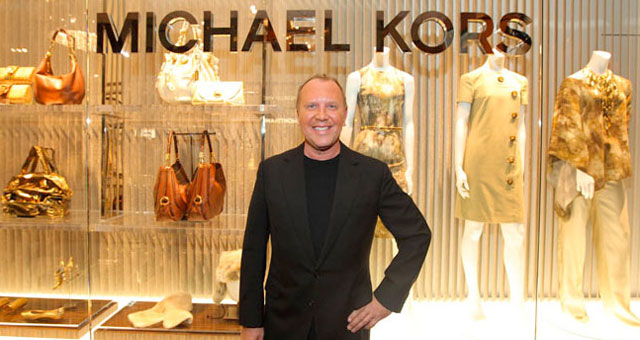

“We were helping his wife and the next thing I knew the entire sidewalk was full of people screaming, ‘Ali! Ali!’ We had to lock the doors. So I had to pull them off.” And, before I can get a word in, “We had Muhammad Ali and his wife come into the shop and the front of the store was glass,” he says. I knocked on the door to see if she needed anything. I didn’t want her to go into a changing room, so I took her into an office instead. “We had Jackie Kennedy Onassis come in to buy jeans once.

It was just, ‘What are you going to wear that’s going to knock everyone out?’ You’d be on the dance floor and Truman Capote would be there and he’d be dancing with Vreeland and you’re like, ‘Is this surreal or what? I’m 18.

“I mean, we dressed for the door on Studio 54. The designer famously spent a lot of time at Studio 54 in the Seventies and when I ask about that period of his life he is effusive.
#Michael kors judge series
Though Kors was widely credited with turning around the fortunes of the label, he left in 2004 to focus on his own brand (that and ten series of Project Runway, of course), which, in 2011, was floated on the New York Stock Exchange – a move that raised £610m and left Kors with a minority share in the international empire he built from scratch, an empire that today counts an impressive celebrity fanbase, including Michelle Obama, Hillary Clinton and Zeta-Jones in the female camp and Jenson Button, Hugh Jackman and John Boyega in the male. A lifeline came in 1997 when LVMH bought a third of his company and Kors himself landed the role of womenswear designer and later creative director at Celine (also LVMH-owned). The move toward grunge didn’t align with the designer’s high-shine aesthetic and he filed for bankruptcy protection in 1993 when production stalled on his lower-price licence collection, Kors Michael Kors. Despite his early successes, the Nineties were tough on Kors. But he’s pleasant and polite – if a little light on eye contact.įollowing the launch of the “Michael Kors” line (of little more than a rail of leather jackets and a few crêpe-de-chine dresses) in NYC department store Bergdorf Goodman in 1981, Kors showed his first runway collection in the Fall 1984 season of New York Fashion Week. It’s no secret that 59-year-old Kors is a multimillionaire (he’s reportedly amassed a £450 million fortune) and it’s also no secret he’d probably rather be topping up said tan on a yacht in his favoured holiday spot, Capri, than hanging out in a basement with me. He’s wearing his trademark black, his smile is warm and he looks healthy: sleek and replete, a modern Sun King with a killer tan. The Kors brand – his name – is emblazoned on a temporary wall, in front of which the designer is perched on a bar stool, like an emperor penguin on an ice block. When I meet Kors after his show, in what feels like a throne room in the vaults beneath the space, he’s positioned on a white stage at one end, while a dozen or so staff members (plus his hirsutely handsome creative director husband, Lance Le Pere) sit at the other. A beacon of high-fashion optimism in an otherwise sour-faced sky, he is a designer who embodies the brand he has created so perfectly that it’s easy to understand why so many people want a piece of both him and it. Unlike other designers who cower from the limelight they are so effective at manufacturing, Kors is bold, brash and utterly brilliant. A lean, mean, blue jean-making machine with (potentially) more Manhattan real estate than Trump and more celebrity friends than you could shake Claudia Schiffer at – the best thing about Kors is that he actually lives up to the hyper-glamorous persona he projects. Never seen with anything other than a perma tan, single-breasted black suit, black crewneck sweater and pair of black aviator sunglasses, Kors is the embodiment of clean-cut American taste.


 0 kommentar(er)
0 kommentar(er)
